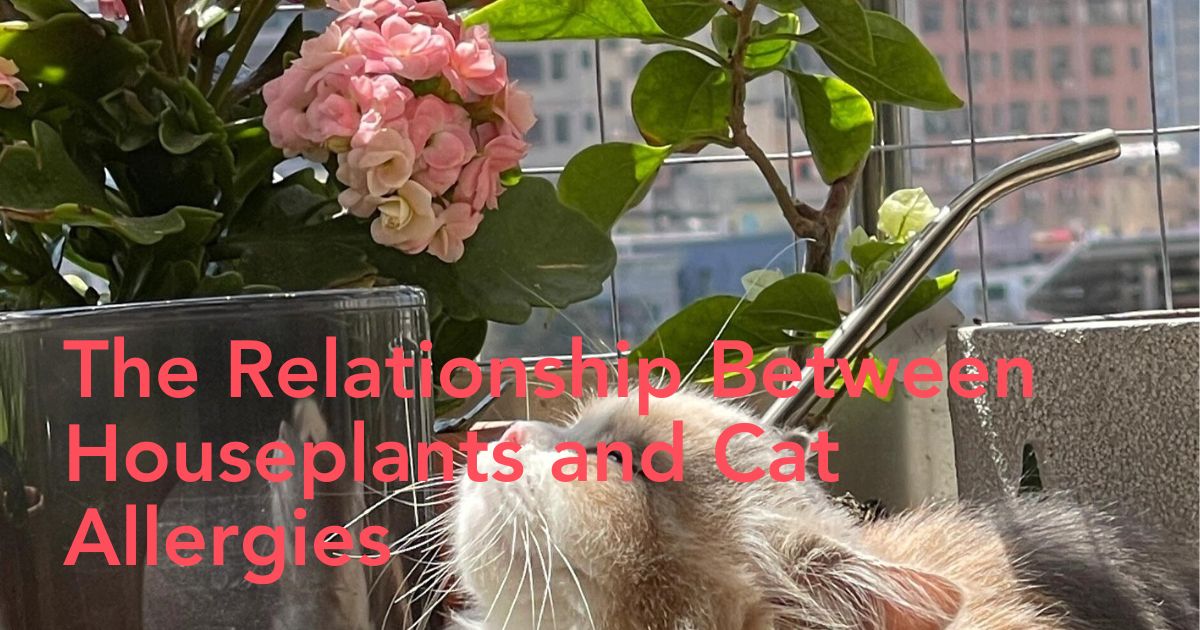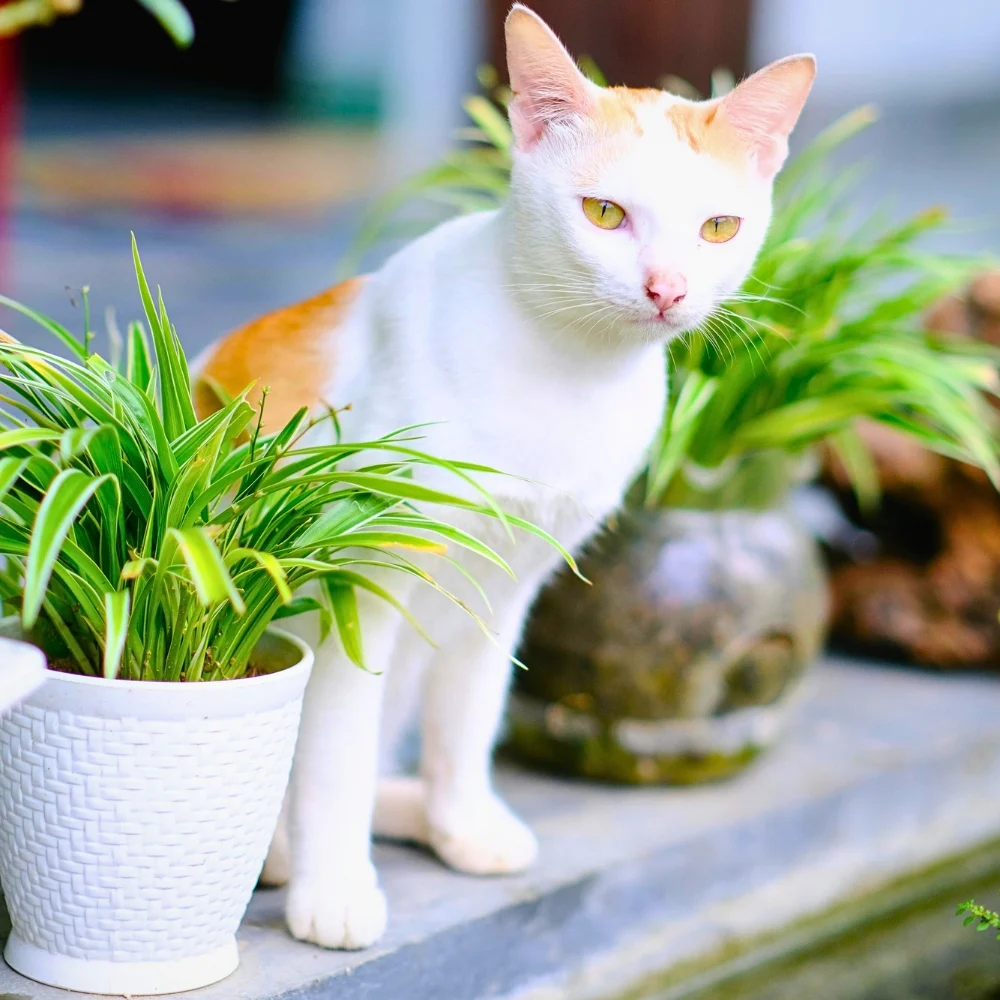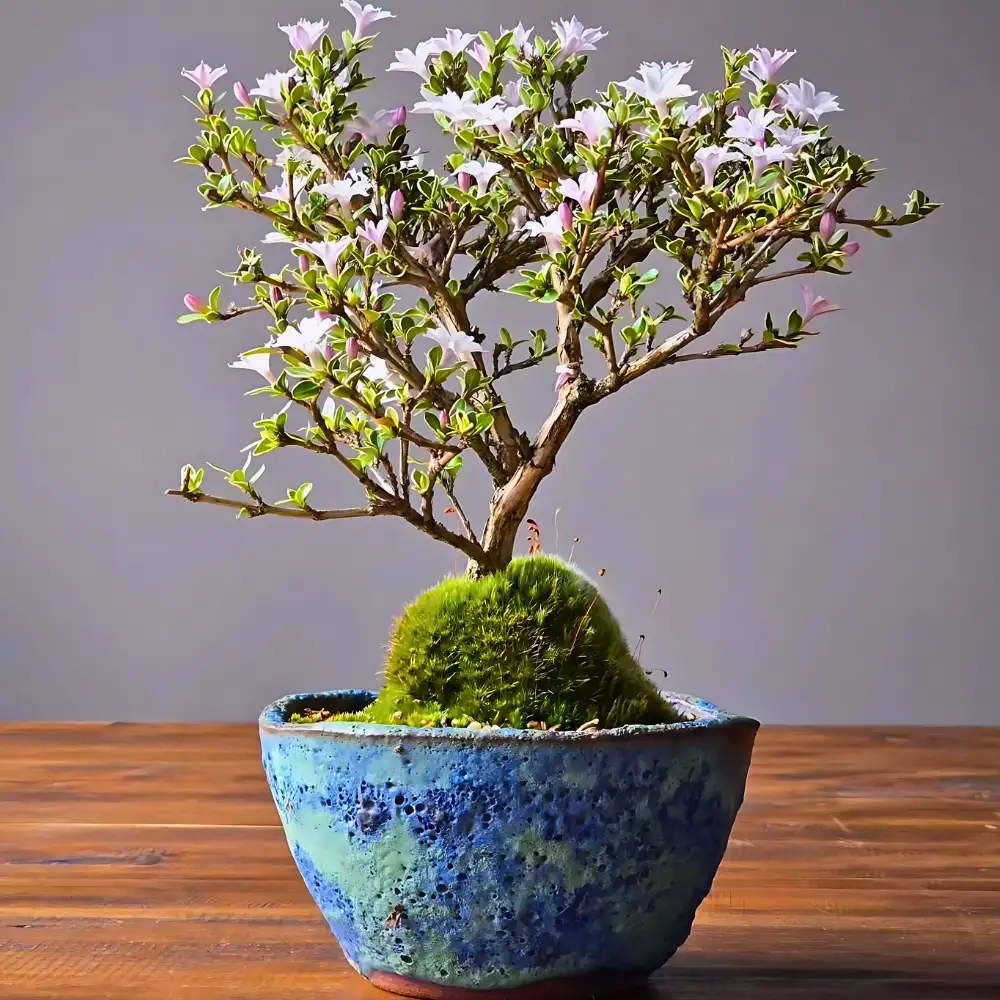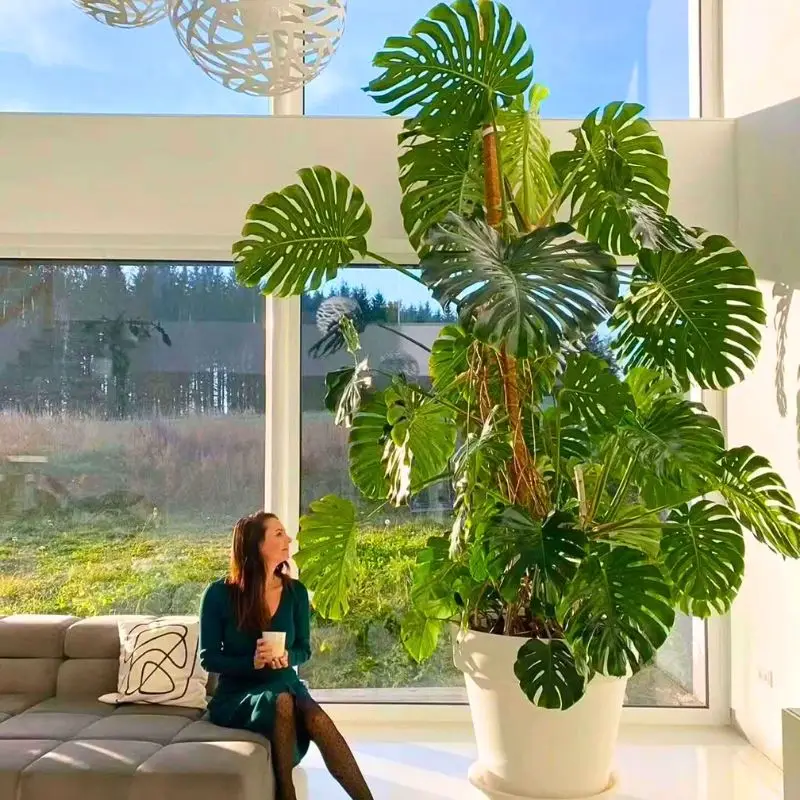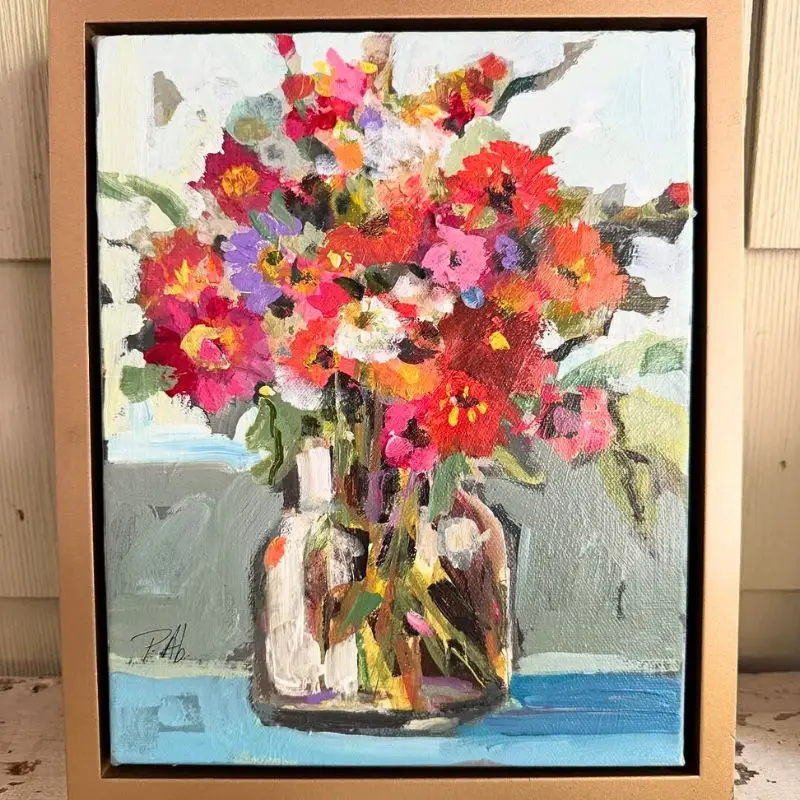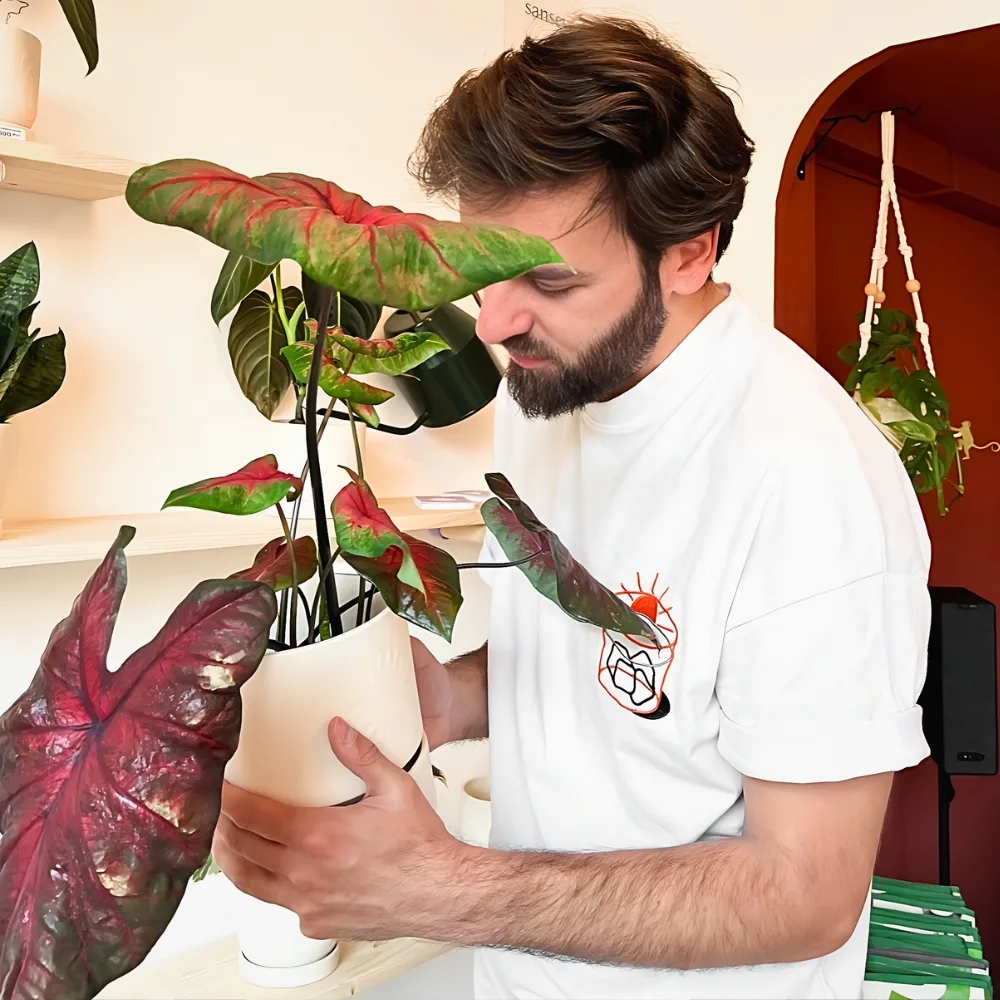You've probably noticed your feline friend sniffing, nibbling, or pawing at your houseplants. It's a cute sight, isn't it? But have you ever wondered if these green roommates could be causing allergies in your cat?
While houseplants can bring life and beauty into your home, they may not always be the best playmates for your furry friend. Some can cause more than just a sneeze!
In this article, we'll explore the relationship between houseplants and cat allergies. We'll delve into which plants might be causing your cat discomfort, and what you can do to keep your kitty safe and sound. So, if you're a cat lover with a green thumb, stay tuned! This article is just for you.

Understanding Cat Allergies
As we continue to explore the topic of cat allergies and the link to houseplants, it's crucial to delve deeper into understanding what allergens tend to affect cats and how to identify the corresponding symptoms.
Common Allergens for Cats
- Environmental Allergens: Entities like pollen, mold, dust, grass, and weeds, along with indoor elements such as perfume, smoke, cleaning products, flea-control products, and certain cat litter trigger what's classified as environmental allergies. Indications include respiratory troubles, evident in symptoms such as sneezing, coughing, wheezing, followed by itchy skin, watery eyes, ear infections, and over-grooming.
- Flea Allergies: In this scenario, the allergen turns out to be flea saliva. Look for intense itching, scratching, hair loss, and skin infections in areas like the tail base, neck, and thighs.
- Food Allergies: Cats with food allergies could react to foods including beef, dairy, wheat, chicken, fish, lamb, eggs, barley, and corn. Food allergies manifest themselves as itchy skin, gastrointestinal concerns such as vomiting and diarrhea, ear infections, and over-grooming.
- Contact Allergies: Allergens incorporate shampoos, flea collars, specific types of bedding like wool, and plastic food bowls. This triggers localized skin irritation and itching at the points of contact.

Identifying Allergy Symptoms in Cats
Identifying symptoms of plant allergies in cats proves vital. Here are the symptoms you'd need to observe:
- Skin irritations: Marked by itching, and evident rashes.
- Gastrointestinal problems: Manifest as vomiting or diarrhea.
- Respiratory issues: Could present themselves as coughing or wheezing.
- Swelling of parts: Look out for swelling of the mouth, tongue, or throat.
- Excessive drooling: This is quite noticeable and unusual for cats.
- Lethargy or weakness: Reduced activity level and general feebleness.
By keeping a vigilant eye on your feline friends, you're able to pick up on allergy symptoms and take immediate steps to address them, ensuring their optimal well-being.
Can House Plants Cause Allergies in Cats?
Cats may suffer allergic reactions from a variety of houseplants. This area of concern becomes clearer as we delve into common house plants as allergens and comprehend the scientific evidence of the role of house plants in cat allergies.

Common House Plants as Potential Allergens
A multitude of housekeeping plants can potentially trigger allergies in cats. For instance, plants such as lilies, aloe vera, pothos, also named Devil's ivy, Dieffenbachia, snake plants, jade plants, and chrysanthemums pose a threat if the cat ingests them or comes into contact with them.
The Science Behind Cat Allergies and House Plants
Allergic Reaction Mechanism
Exposure to an allergen, such as pollen or mold spores, triggers the cat's immune system to consider the substance harmful. The ensuing production of allergy-specific antibodies prompts the release of histamines and other chemicals. This immune response manifests as allergy symptoms in the cat.
Diagnosis and Treatment
Identifying specific allergens usually entails performing blood and skin tests. Antihistamines are common treatments employed to alleviate symptoms, whereas corticosteroids are applied in severe cases. Immunotherapy offers a long-term management aid, while strategies such as minimizing exposure to the allergenic plant are also employed.
Prevention Strategies
Minimizing allergic reactions to houseplants involves various strategies. Opt for low-pollen or non-flowering plants, ensure suitable humidity levels to prevent mold growth, and leverage air purifiers to eliminate allergens. Regularly cleaning the cat's environment and possessions, along with selecting cat-safe, hypoallergenic plant species provides additional layers of protection.

The Implications of Cat Allergies
Cat allergies can have severe implications for your furry friend’s health. These allergies can arise from several sources, one such being houseplants. Understanding the effects of these allergies and the role of a vet in diagnosing plant-triggered allergies becomes critical.
Effects of Allergies on Cat Health
Cats often exhibit a natural curiosity towards houseplants, and may chew on them for extra nourishment. However, some houseplants may harbor harmful substances or pollen, which can trigger allergies in cats. Respiratory issues are common in those bearing sensitivity to certain pollens. To ensure your cat's safety, it's crucial to research plants before introducing them into your home environment. Keeping the toxic ones out of reach and opting for cat-safe plants reduces the risk significantly. Immediate contact with a vet is necessary if your cat shows symptoms of a toxic reaction. Darina, an expert from MeoWoff explains, "Chronic allergies can develop in cats just like in humans, in response to consistent exposure to certain plants. Prevention is key."
The Role of Vet in Diagnosing Plant-Triggered Cat Allergies
Vets play a pivotal role in diagnosing plant-triggered cat allergies. The first step involves ruling out other conditions that could be causing similar symptoms. These may include parasites, infections, or food allergies and would involve testing such as skin scrapes, fungal cultures among other diagnostic measures. If an environmental allergy is suspected, allergy testing could be recommended. These tests can identify specific allergens causing the reactions and include skin testing or blood tests.
The vet comes up with a treatment plan based on the diagnosis. The plan can include administering medications like antihistamines or corticosteroids, immunotherapy, or topical treatments. Regular follow-up appointments help assess the cat's response to the treatment. Treatment adjustments are made in response to the cat's progress. Chronic cases might demand the discussion of long-term management options like allergy shots (immunotherapy). Having a vet to guide through this process makes it less overwhelming and more manageable.
Safe Alternatives to House Plants
Cat safety in our homes is paramount. Allergic reactions can cause your feline friend discomfort and even serious illness. In light of this, it's crucial to replace potentially harmful houseplants with safer alternatives.
Cat-Safe Indoor Plants
Opt for less toxic plants to create a cat-friendly environment indoors. Rather than lilies, try adding African violets, orchids, or roses. These plants are not only beautiful, but they are also a safe choice for homes with cats. Instead of aloe vera, consider growing Haworthia or Echeveria succulents. Do replace your Snake plants or Ficus with Parlor, Areca or Ponytail Palms, or even Peperomia Plants or Money trees, respectively. Another excellent idea would be to replace potentially harmful English Ivy or Dieffenbachia plants with safe alternatives like Swedish Ivy, Grape Ivy, or Maranta Prayer Plants, respectively.
Creative Non-Plant Alternatives for Home Decor
But what if you'd love to deviate completely from traditional houseplants? Interesting decor alternatives exist and can equally transform your space into an appealing, stylish haven. Intricate wall hangings, colorful woven baskets, and aesthetic bookshelves can provide living areas with fresh and chic appearances. Other options could include tasteful ceramic or glass art pieces. There's no limit to your creativity with these cat-safe alternatives. Remember, safety and style can harmoniously co-exist in your home—your cat will thank you.
Tips to Decrease Allergy Risks
So, you've learned a lot about cats, allergies, and houseplants. It's not all doom and gloom though. With a bit of careful planning, you can create a beautiful, cat-friendly environment.
First, do your homework. Research any plant before you bring it into your home. Look for cat-friendly options like African violets and orchids. Remember, it's always better to be safe than sorry.
If you're unsure, consider non-plant decor. As Darina from MeoWoff suggests, there are plenty of stylish alternatives that won't harm your cat.
Finally, if you suspect your cat is having an allergic reaction, don't hesitate to call your vet. They're there to help.
Keeping your cat safe doesn't mean you have to compromise on style. With a bit of creativity, you can have both. So, go ahead and create that perfect, allergy-free space for your furry friend.

